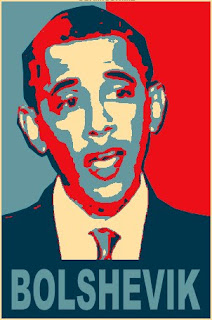
Obama’s proposal to increase the federal minimum wage was branded a socialist act. However, the president wishes to safeguard Americans’ purchasing power in order to increase consumption and encourage businesses.
Is there another “Bolshevik” at the White House? Eighty years have passed since Franklin D. Roosevelt’s “New Deal” drew on the then-president such scornful reproach on the part of the American capitalists. Now history seems to be repeating itself after Barack Obama’s latest economic measure. In his recent State of the Union address, Obama announced two initiatives destined to create a lot of controversy. The first initiative is an executive order to increase the federal minimum wage from $7.25 to $10.10 per hour. The second initiative is to request that Congress introduce a sort of sliding hourly wage indexed to inflation.
Even though the first measure will only affect a few thousand employees, the measure is still significant as these employees would earn 40 percent more. The new measure will only apply to new federal employees, so the number of people benefiting from this measure will grow slowly over time. However, this was all that was needed to attract the wrath of Wall Street and the heads of large corporations to the White House. In the eyes of some, the president’s move, though its economic weight is limited, seemed to be the sign that the country’s politics were taking on a scandalous socialist stance. This is exactly what happened in the 1930s, when Roosevelt saved American capitalism from its catastrophic errors by increasing control over the stock market and legal protection for low wage earners.
A fierce battle is expected to erupt in Congress over Obama’s other move concerning sliding hourly wages. This has even had echoes in Italy, where this measure has been the subject of fiercely critical comments in memory of the sort of religious war that tore Italy apart in the 1980s. Many are forgetting the fundamental differences between yesterday’s Italy and today’s U.S. — to begin with, the difference in our inflation rate at that time and the current U.S. inflation rate. Above all, not to mention American politics’ strongly pragmatic approach regarding economic decisions: The same president can introduce a measure of sliding hourly wages this year and quietly withdraw it in a couple of years once the measure has reached its predefined objective.
We are now at the crucial point. Obama is not concerned with finding easy ways to increase his approval rating; he does not need to make the effort since he cannot be re-elected. This is a strictly economic initiative that aims to safeguard employees’ purchasing power or, to be more precise, strengthen domestic demand for consumption in the belief that the current relative weakness of the dollar will push American consumers to be mostly content with purchasing products that are “Made in the USA.” Therefore, other than having a negative effect on businesses, Obama’s seemingly congruous move means that the White House is aiming to consolidate the internal market with domestic production.
In this way, the American example also teaches Europe two lessons of great importance. The first lesson is that that the strength of a manufacturing system certainly depends on its ability to compete in foreign markets, but cannot hold up over time without being backed by a strong and viable domestic market. The second lesson is that the gradual drop in employees’ purchasing power is the surest way to dry up the main source of profit for the businesses themselves.
These lessons emphasize the short-sightedness of those who consider wage cuts to be the main or even the only way out of the crisis. This error is more serious in a country such as Italy, where the race to reduce wages appears to be nothing more than a mere survival mechanism that was used in the past due to the continuous competitive devaluations of the exchange rate. The name of the game has changed, but you cannot recover from the old habit of dumping the errors of the entrepreneurial class onto the workers, an entrepreneurial class that is far too reluctant to invest and closed to innovation.

Leave a Reply
You must be logged in to post a comment.